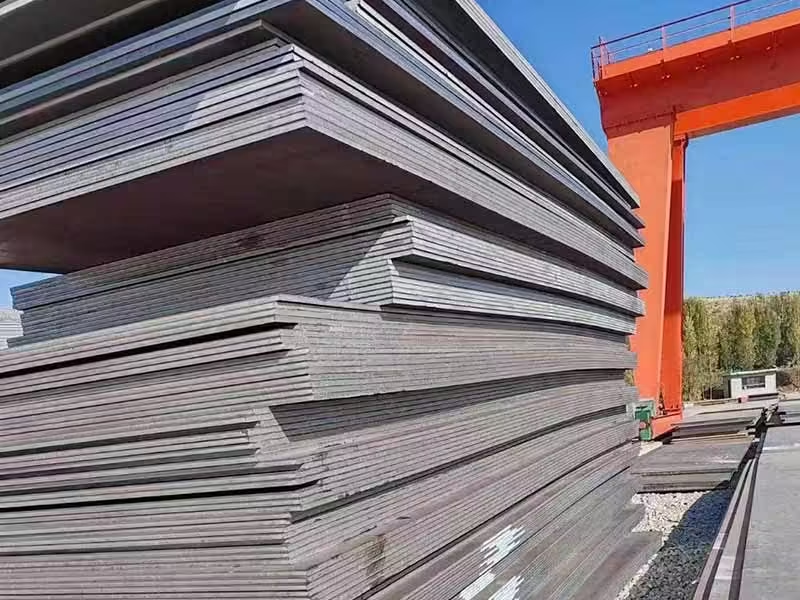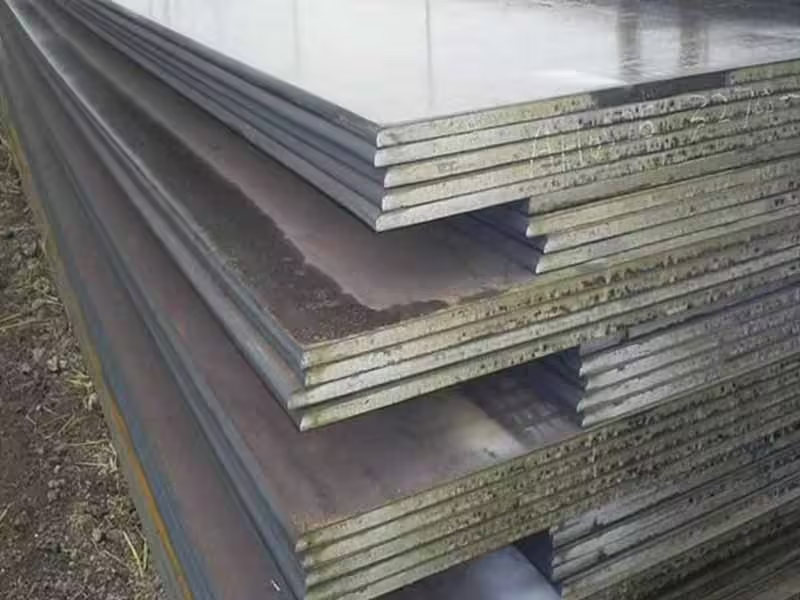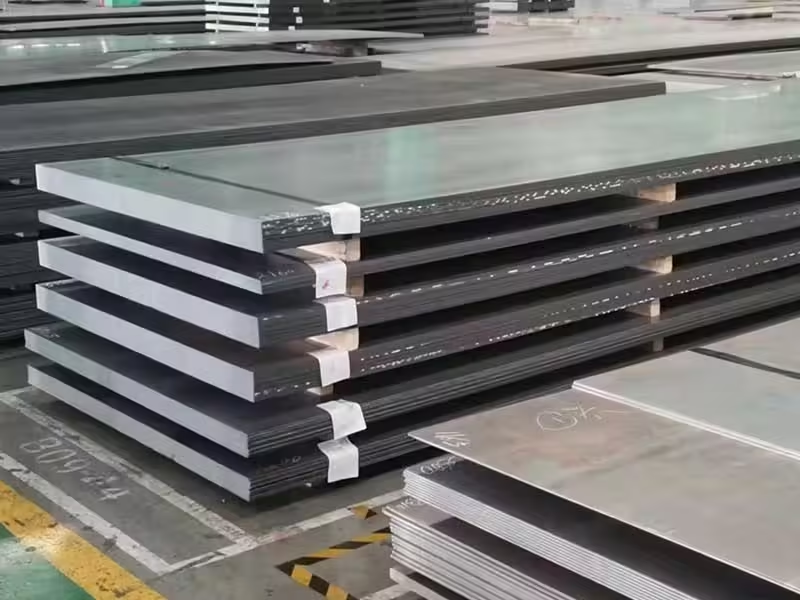내 블로그에 오신 것을 환영합니다!
본론으로 들어가기 전에, 제가 더 많은 정보를 공유하고, 커뮤니티와 소통하고, 업데이트를 게시하는 소셜 미디어 플랫폼에 함께해 주세요. 저와 소통하는 방법은 다음과 같습니다.
페이스북:https://www.facebook.com/profile.php?id=61571539990739
자, 이제 함께 여정을 시작해 볼까요? 여기 있는 내용이 통찰력 있고, 흥미롭고, 가치 있다고 느끼시기를 바랍니다.
목차
소개
건설 또는 제조 프로젝트를 시작할 때 적절한 소재를 선택하는 것은 매우 중요합니다. 일반적으로 고려되는 두 가지 소재는 폴리카보네이트(PC) 판과 강판입니다. 각 소재는 고유한 장단점을 가지고 있어 다양한 용도에 적합합니다. 이 종합 가이드는 PC 판과 강판의 특성, 용도 및 고려 사항을 자세히 설명하여 프로젝트에 대한 현명한 결정을 내리는 데 도움을 드립니다.
재료 특성: PC판 vs 강판

기계적 특성
| 재산 | PC 플레이트 | 강판 |
|---|---|---|
| 밀도 | 1.20~1.22g/cm³ | ~7.85g/cm³ |
| 인장 강도 | 55~75MPa | 400–620 MPa(등급에 따라 다름) |
| 영률 | 2.0–2.4 GPa | 200 GPa |
| 파단 시 신장 | 80–150% | 15–25% |
| 충격 저항성(아이조드) | 600~850J/m | 다양함; 일반적으로 PC보다 낮음 |
| 경도(록웰) | M70 | 120–200 HB (등급에 따라 다름) |
| 열전도도 | 0.19–0.22 W/(m·K) | 50~60W/(m·K) |
| 작동 온도 | -40°C ~ 115°C | 최대 500°C(합금에 따라 다름) |
| 부식 저항성 | 높은 | 다양합니다. 스테인리스 스틸은 부식에 강합니다. |
재료 속성 데이터베이스와 제조업체 사양에서 얻은 데이터입니다.
물리적 및 화학적 특성
PC 플레이트는 투명성, 내충격성, 그리고 경량성으로 유명한 열가소성 폴리머입니다. 다양한 화학 물질에 대한 내성이 뛰어나고 치수 안정성이 우수합니다. 하지만 긁힘에 취약하며, 적절한 첨가제 없이 장시간 자외선에 노출되면 분해될 수 있습니다.
강판은 합금에 따라 높은 강도, 내구성, 그리고 내열성을 제공합니다. 탄소강은 부식되기 쉬운 반면, 스테인리스강은 뛰어난 내식성을 제공합니다. 강판의 높은 밀도는 강도를 높이는 데 도움이 되지만 무게도 증가시킵니다.
응용 분야: 각 재료가 탁월한 곳

PC 플레이트 응용 분야
- 건축용 유리: 투명성과 충격 저항성 덕분에 채광창, 캐노피, 온실에 사용됩니다.
- 안전 방패: 기계 보호 장치 및 보호 장벽에 사용됩니다.
- 전자제품: 전기적 절연이 필요한 하우징 및 부품에 사용됩니다.
- 자동차: 헤드램프 렌즈와 내부 구성품에 적용됩니다.
강판 응용 분야
- 건설: 건물, 교량, 인프라의 구조적 구성 요소.
- 조선: 선체 구조 및 보강.
- 자동차: 섀시 및 차체 패널.
- 산업 장비: 기계부품 및 압력.
비용 고려 사항
구체적인 가격은 시장 상황에 따라 변동하지만, 일반적으로 PC 강판은 탄소강판에 비해 단위 중량당 가격이 더 비쌉니다. 그러나 제작이 용이하고 설치 비용이 저렴하여 초기 자재 비용을 상쇄할 수 있습니다. 강판은 무게가 더 무겁고 설치에 더 많은 노동력이 필요할 수 있지만, 장기적인 내구성을 제공하여 프로젝트 수명 기간 동안 비용 효율적일 수 있습니다.
환경 영향

PC 플레이트는 재활용이 가능하며 생산 과정에서 발생하는 탄소 발자국이 강철보다 적습니다. 그러나 석유 기반 제품에서 추출되기 때문에 지속가능성에 대한 우려가 제기됩니다. 강철 생산은 에너지 집약적이지만, 강철은 재활용성이 매우 높고, 강철 재활용 인프라는 전 세계적으로 잘 구축되어 있습니다.
내구성 및 유지 관리
PC 플레이트는 뛰어난 내충격성을 제공하며 부식되지 않아 습기와 화학 물질이 있는 환경에 적합합니다. 하지만 긁힘에 약하며, 실외 사용 시 자외선 차단 코팅이 필요할 수 있습니다.
강판은 내구성이 뛰어나 고온과 고하중을 견딜 수 있습니다. 탄소강은 녹 방지를 위해 보호 코팅이나 아연 도금이 필요한 반면, 스테인리스강은 내식성이 우수하여 유지 보수가 덜 필요합니다.
결론
PC 판과 강판 중 어떤 것을 선택할지는 프로젝트의 구체적인 요구 사항에 따라 달라집니다. 가볍고 투명하며 충격에 강한 소재가 필요하다면 PC 판이 탁월한 선택입니다. 고강도, 내구성, 내열성이 필요한 경우에는 강판이 더 적합합니다. 환경 조건, 하중 요구 사항, 미적 선호도, 예산 제약 등의 요소를 고려하여 결정하십시오.
자주 묻는 질문
Q1: PC판을 구조용으로 사용할 수 있나요?
A1: PC 판재는 강철에 비해 인장 강도가 낮기 때문에 일반적으로 1차 구조용으로는 사용되지 않습니다. 그러나 비내력 부품 및 보호 장벽에는 적합합니다.
Q2: UV 노출은 PC 플레이트에 어떤 영향을 미치나요?
A2: 장시간 자외선 노출은 PC 플레이트를 황변시키고 깨지기 쉽게 만들 수 있습니다. 자외선 안정화 PC를 사용하거나 보호 코팅을 하면 이러한 현상을 완화할 수 있습니다.
Q3: 강판에는 여러 종류가 있나요?
A3: 네, 강판은 탄소강, 스테인리스강, 고장력강 등 다양한 등급으로 나뉘며, 각각 다른 용도에 적합한 특정한 특성을 가지고 있습니다.
Q4: 어떤 재료가 더 환경 친화적인가요?
A4: 두 소재 모두 환경적 고려 사항이 있습니다. PC는 재활용 가능하지만 화석 연료에서 추출되는 반면, 철강 생산은 에너지 집약적이지만 잘 구축된 재활용 인프라를 통해 이점을 얻을 수 있습니다.
Q5: PC 플레이트가 특정 분야에서 유리를 대체할 수 있나요?
A5: 네, PC 플레이트는 유리에 비해 가볍고 충격에 강한 대체재로 유리창이나 보호 스크린 등에 자주 사용됩니다.

